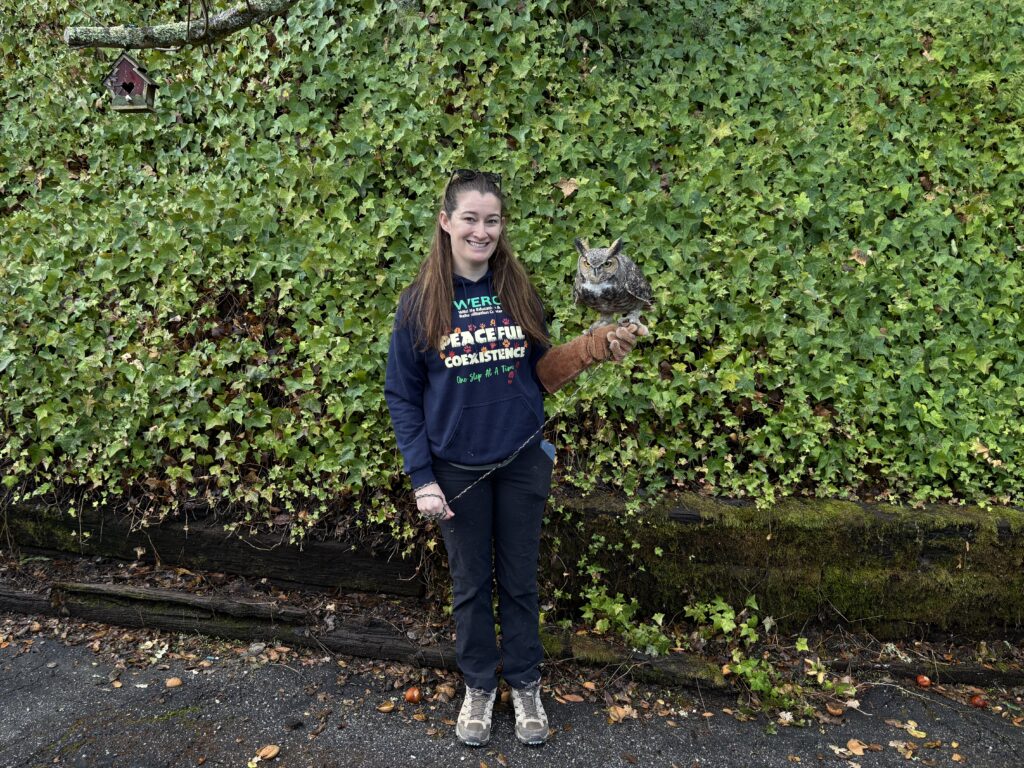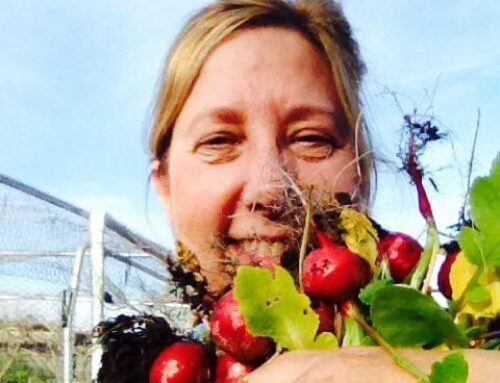
Photo by Calvin Nuttall. Ashley Quick, WERC executive director with Luna a Great Horned Owl. Luna has been with WERC as an animal ambassador since 2008.
Larger facility will allow nonprofit to increase the number of animals and range of species they rehabilitate
By Nolan Lyle
Injured and recovering animals in the South County will soon have more room to recuperate as the Wildlife Education and Rehabilitation Center (WERC) is beginning an exciting new chapter, moving to a larger and more accessible facility. The nonprofit organization, dedicated to educating the public about local wildlife and rehabilitating animals in need, has partnered with Santa Clara County Parks to create new opportunities for community engagement and conservation.
“We’re super excited about the partnership because our missions are very cohesive,” said Ashley Quick, WERC’s executive director.
It’s a bigger and better space for wildlife. WERC’s new location spreads across five acres, a significant upgrade from their previous one-acre site. Located near the parking lot of the Mendoza Ranch entrance at Coyote Lake Harvey Bear Ranch County Park in Gilroy, the facility will be easy to spot for park visitors, enhancing visibility and access.
“We’ll be able to expand our mission and reach more people,” Quick said.
The larger space will allow WERC to increase the number of animals they can help and the range of species they help rehabilitate. Currently they focus on raptors, songbirds, and small mammals, and WERC plans to include vector species such as skunks, coyotes, and raccoons in the future. The new site will still be calming, which is needed for animal recovery.
“Like our previous location, we have limited human noise pollution, so the animals can rehabilitate in peace and quiet,” Quick said.
Education is at the heart of WERC’s mission.
“Education is 50 percent — if not more — of what we do,” said Quick. She emphasized the importance of teaching people how to coexist with wildlife to prevent harm. For example, WERC plans to educate the public about the dangers of using poisons, which often harm unintended species in the ecosystem.
The new location will also support expanded educational opportunities, including an invasive species awareness program and more events. WERC frequently partners with organizations like Open Space Authority and Santa Clara County Parks to reach students and the community.
“It’s amazing to see people connect with an animal they’ve never encountered before,” Quick said.
WERC relies heavily on volunteers, with only three paid staff members: Ashley Quick, Education Coordinator Anna Pascual, and Animal Care Coordinator Colleen Grzan. With the move, they plan to grow their team and grow volunteer opportunities.
Fundraising remains critical for the organization. Although a recent large donation kickstarted the move, significant funding is still needed.
“We have a lot more fundraising to do,” Quick said. WERC is running a capital campaign and hosts events like benefit luncheons and online auctions, such as one that happened the week of Nov. 18. They also accept donations through their website and maintain an Amazon wish list.
“WERC started over 30 years ago,” Quick said. Back in the 1980’s Sue Howell and Ashley’s father, John Quick, were volunteering at YSI in San Jose. YSI stands for Youth Science Institute. “At the time, my dad was providing veterinary services as a volunteer, and Sue was helping wildlife. They both were from Morgan Hill, so they connected in that way”, Quick said.
YSI decided to stop rehabilitation and focus solely on education. Both Sue and John saw a growing need for wildlife rehabilitation, especially since a lot of development was happening in the Bay Area at the time. They realized that wildlife wouldn’t do well and foresaw a need for a place for injured and orphaned animals. “They quickly established WERC here in the hills. Since it was a fast transition, Sue offered up her home, and that’s where we’ve been ever since”, Quick said.
Currently, WERC is rehabilitating five bobcat kittens, four of which were bottle-fed from a young age. These kittens, transferred from other organizations, are among WERC’s most critical care patients.
“Bobcats are our specialty,” Quick said. The team recently released two rehabilitated bobcats and is preparing the remaining kittens for release. WERC’s work goes beyond animal care — it’s about fostering a connection between people and wildlife.
“It’s special to create that bond between our local wildlife and the people living alongside them,” Quick said.
To learn more or support WERC, visit their website at www.werc.org or follow them on Facebook.
Donations, volunteering, and participating in events are all great ways to help.
“Any way people can reach us, we’re happy to start their education journey,” Quick said.
Nolan Lyle is a sophomore at Bellarmine Preparatory School.






